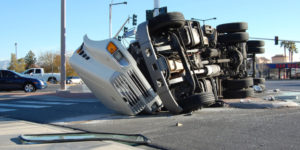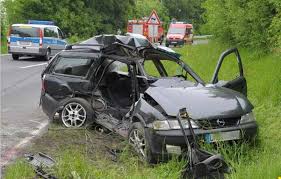The Basics of Auto Injury Lawsuits and What Makes Yours a Success
We’ve all been (or will be) in a car accident someday. But how we know whether or not we have a successful personal injury case against a defendant who should reimburse us for our injuries? Most of the time, an accident victim has a legal right to collect money for his injuries by proving the four elements of a car accident claim in court. In the U.S., all defendants are innocent until proven guilty. So the burden to you, the injured plaintiff, is to prove you are owed these damages by the defendants. All they have to do is deny your claim. If your evidence doesn’t clearly prove their guilt, then they win and you don’t collect. But before you walk down the road of civil litigation, a lot of investigative work goes into a successful auto injury lawsuit, which we’ll discuss in a bit. Just don’t expect us to file your lawsuit a week after we meet.
There are four elements to proving injuries against a defendant and you must clearly demonstrate your charges are true. They are duty, breach, causation, and damages. Below, is a brief overview or each of these four elements so that you will have a better idea of what it will take to prove that you’re entitled to be compensated for your injuries.
Duty of Care – The first element in your successful burden of proof chain is clearly illustrating that the defendant owed you a duty of care to exercise an acceptable level of caution in order to ensure that you will not be harmed. Texas Civil Codes and Procedures (the rules that govern civil lawsuits in our state) clearly establish the level of the duty of care that a person or organization owes to another, depending on the circumstances of the accident; relative to the relationship of the parties involved at the time the accident occurs. Proving the defendant in your case owed you at least some duty of care will probably be fairly uncomplicated since nearly all drivers owe each other the elemental duty to drive as a reasonable person would in order to keep others safe. Unless there are unusual circumstances, the chances are that a general “reasonable person standard” applies to the defendant (or defendants) in your case.
The Defendant’s Breach of Duty – Once you have successfully proven that the defendant in your case owed you a duty of care, the next step is proving that he or she violated that duty. In a great majority of auto accident injury cases, plaintiffs and their attorney must clearly show that the defendant drove in a way that a reasonable person would not have driven. The defendant may be able to prove that he or she has been a safe driver for many years by showing a driving record of no tickets since the Reagan Administration. But that doesn’t matter if you can prove that the defendant in your case drove unreasonably only for the moments immediately leading up to your car wreck. Then, he or she can be held legally responsible for any consequences that resulted from his or her negligent actions that caused you harm.
Proving that the defendant breached the duty of care is typically one when you and your attorney present evidence to the court to remove any doubt about what the defendant did (or failed to do) that caused the car wreck. The jurors in your case will consider your breach evidence and other evidence that clearly illustrates the defendant’s actions or intent at the time of the wreck. Then during their deliberations, they will rule whether the defendant behaved reasonably or unreasonably. Offenses such as speeding recklessly, driving at night without headlights, running through red lights, driving while intoxicated, and more can constitute a breach of the defendant’s duty of care, even if they may not have been criminally charged for these offenses. Some defendant actions might even support charges of willful intent to breach that duty, which can strengthen your case.
Causation of Defendant’s Breach of Duty (what actually caused the wreck) – Once you have proven the elements of duty and breach, you must then demonstrate that the defendant breached his duty of care through negligence. But simply showing that this person might have been negligent isn’t always enough to win your charges that the defendant is responsible for your auto wreck. Because when a defendant is compelled to deny causation, often he will argue “unforeseeable circumstances” such as other drivers, pedestrians, or even your actions caused the wreck. This can be the last stand for an accident defendant to wiggle out of being judged liable for your injuries and other damages. So expect them to claim anything from a pedestrian stepped in his way and forced him to hit your vehicle, to their toddler threw a bottle of apple juice at the driver, to swear that he saw an alive-and-well Elvis driving a classic Cadillac convertible. Maybe it happened, maybe it didn’t. But how do you disprove the defense? It’s up to you and your lawyer to counter every claim of defense, or the defendant wins because your level of proof doesn’t convince the jury that his or her negligence is enough to be held liable for your damages. This is why it’s terribly important to have sufficient evidence to prove any defense that is thrown at you, and that it was the defendant’s inappropriate conduct that caused you harm. And the best way to have the best evidence is with the help of an experienced vehicle accident attorney.
Damages – Once you have successfully proven the above three elements of your injury case, then you’re entering the home stretch of your lawsuit against the defendant.
It’s time to prove the amount of damages you are entitled to collect from the defendant (or defendants) and hand them the bill. The term “damages” isn’t limited to just your injuries and the bills that need to be paid. It’s a broader term that refers to the entire monetary value of your injury case (the total sum of money) that you’ll recover from the defendant when the jury (or judge) rules in your favor. So damages also include physical pain, suffering, and psychological scars arising from your injury, present lost wages as a result of your inability to work, loss of future earning capacity if your injury leads any period of disability, and of course, the repair, or replacement bills to your auto and any items of worth that were also destroyed in the wreck. In order to prove what you’re entitled to collect, you and your Texas auto accident attorney with our Law Firms will need to calculate exactly what you’re owed and provide evidence of the extent of your injuries and losses to support your calculations.
Determining the full amount of damages is as important as the other three burdens of proof since you have only one chance to receive fair compensatory damages from any single negligent defendant. But computing every single loss can be challenging unless you have an experienced Texas auto accident attorney who knows the value of personal injury losses and how to effectively calculate them so the court will see them as reasonable. How do you put a price tag on an intangible loss such as pain and suffering, or that of your child? In calculating the loss of earning capacity, how do you account for hypothetical raises and promotions you would have earned had you continued to work, or gotten a promotion, or were hired away by another company at double your current salary? How can you figure out how much all of your medical bills will amount to if your treatment is not yet complete, and your doctor can’t tell how long it will last? The auto injury attorneys at our Texas Law Office knows how to account for and calculate every one of your damages, and make certain that you will recover as much as reasonably possible for your injuries.
Put our years of experience to work for you. If you want to know what your rights are, how to proceed with your claim, and how much compensation you can secure from your auto injury case, call the auto accident attorneys with our Law Firm now for a free consultation and find out how we can help you recover the full fair value of the damages you have suffered through the negligence of another driver.
This Blog was posted by No.1 Lawyer – Carabin Shaw Attorneys At Law in El Paso
